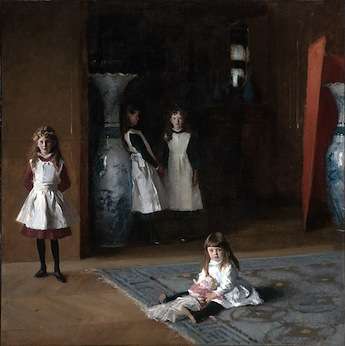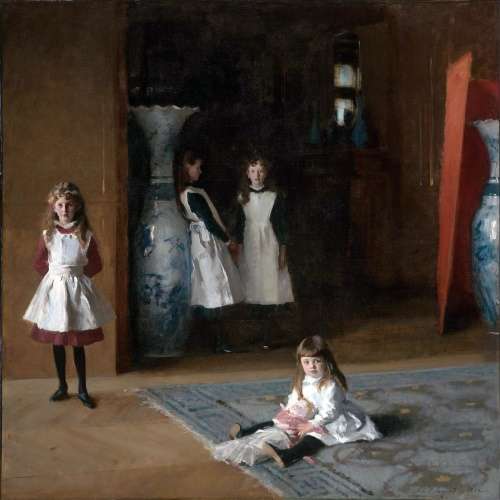John Singer Sargent may have tried to say something about a friend’s family when he created the painting The Daughters of Edward Darley Boit in their sumptuous Paris apartment.
Sargent had just started to make a name for himself. Just a few years earlier, the author Henry James wrote he offered “the slightly ‘uncanny’ spectacle of a talent which on the very threshold of its career has nothing more to learn.”
Sargent and Boit were friends who painted together, though Boit remained an amateur all his life. Boit came from Boston, a Harvard graduate, athletic, handsome and rich. His family fortune came from the China trade. He married Mary Cushing, the only daughter of wealthy China trader John Perkins Cushing. At the time of the painting, she had recently died, leaving her husband to care for their four daughters.
Sargent traveled in the same cosmopolitan haute bourgeois circles as Boit. He was born on Jan. 12, 1856, in Florence, Italy, to Massachusetts expatriates living off savings and a small inheritance. His parents have been described as ‘feckless hypochondriacs’ who drifted quietly around Europe. Their son was quite the opposite: an ambitious workaholic who flattered his way through society to win lucrative portrait commissions.
John Singer Sargent Paints
For the painting of the four sisters – Florence, Jane, Mary Louisa and Julia – Sargent chose not to group them together for a happy family portrait. He created an unusual tableau modeled after Diego Velasquez’ Las Meninas, which Sargent had copied in Spain. Though the four girls are in the same room, they appear isolated from each other.
The Daughters of Edward Darley Boit evokes strong and varying reactions. It isn’t clear what exactly the girls are doing. Some suggested Sargent positioned the two older girls at the edge of a dark passageway to suggest their entry into adulthood.
Sargent may have picked up on a discordant strain in the Boit family. Fourteen years after he painted the four girls, Edward Darley Boit announced he would marry the 20-year-old friend of one of his younger daughters.
Their cousin Mary Boit then visited them in Paris just after the announcement.
“It is a very strange thing and I am more sorry for the girls than anything,” she wrote. “Uncle Ned quite scares me.”
None of the four girls married, and the two older ones had emotional problems when they got older. In 1919, they donated the painting to the Museum of Fine Arts, along with the two giant blue-and-white porcelain vases depicted in the work.
Critics accused John Singer Sargent for painting psychologically shallow portraits. But The Daughters of Edward Boit suggests otherwise.
This story was updated in 2020.



5 comments
One of my favorite paintings.
Mine also. I think fondly of a splendid day in Boston with my son when I first saw this painting ….and the vases.
What an interesting painting. It’s beautiful! And the vases remind me of Gulliver’s Travels!
I think it is important to note that the girls’ mother had not just died at the time of painting. This canvas was finished in 1882, and Mary Louisa “Isa” did not die until 1894, twelve years later. Though Edward Boit’s remarriage may have scarred his daughters, it did not happen before this was painted.
[…] week at the exact same time at the exact same table, Isabella Stewart Gardner and John Singer Sargent ate lunch together at the Copley Plaza Hotel in […]
Comments are closed.